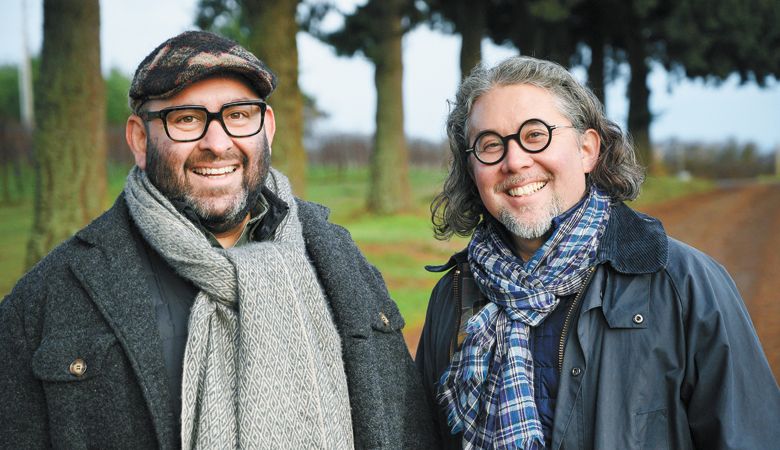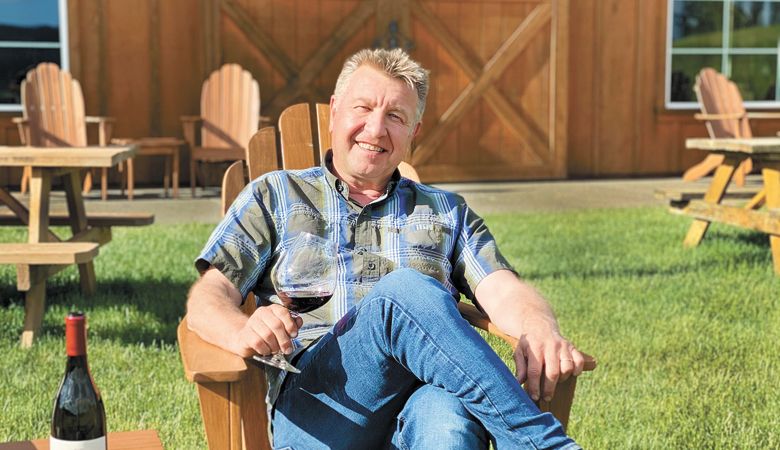All in
Presenting passetoutgrain
While Bordeaux remains the standard in the world of red blends, others demand respect, too. Such is the case for Passetoutgrain. More specifically, ones made here in the New World.
Traditionally, Passetoutgrain (passe-too-grarn) consists of one-third Pinot Noir and two-thirds Gamay Noir; both are harvested and co-fermented together to make the finished wine. In Burgundy, the appellation Passetoutgrain (officially Bourgogne Passe-Tout-Grains) is dedicated to this blend, but it can be made within the entire region of Burgundy.
In Oregon, a few producers pay homage to this Burgundian heritage, crafting a version of they call “vin de soif,” or thirst-quenching wines. Drinkable, unpretentious and typically more affordable, these wines are intended to drink early, if not immediately after bottling, like Beaujolais. With no need for cellaring, Passetoutgrain is made for immediate satisfaction and best enjoyed with others.
Generally, Passetoutgrain means “toss it all in.” But according to James Laughlin, sales and hospitality coordinator for Domaine Divio, located outside Newberg, the word colloquially means “pick them all,” referring to the harvest and crush, in tandem, of the two varieties.
Laughlin adds, “We harvest the grapes on a cool morning, then crush and co-ferment the wine together. Once primary fermentation is complete, the wine goes into neutral French oak barrels for five months to soften and mature [the wine]. Voila! Passetoutgrain is ready to be released, just in time for summer.”
Those familiar with Domaine Divio, know the importance of owner/winemaker Bruno Corneaux’s Burgundian heritage. Laughlin says, “We would make the Passetoutgrain year after year, even if nobody ordered it because it is an expression of our identity. That said, our guests love it.”
As Gamay plantings increase in the Willamette Valley, consumer awareness and appreciation grow as well; add in the dominance of Pinot Noir in Oregon, and you have a recipe for Passetoutgrain success. Once you taste the wine, no convincing otherwise is necessary.
Following the philosophy that the finest wines are made in the vineyard, Domaine Divio remains committed to sustainable viticulture through dry farming, hand-harvesting, and organic and Biodynamic practices. Corneaux sources Pinot Noir from his Clos Gallia Estate Vineyard and throughout the Ribbon Ridge AVA, while the Gamay comes from the new Tualatin Hills AVA.
In Burgundy, carbonic maceration brings out the fruity, sweet characteristics of Gamay. However, in the Willamette Valley, ripeness is reached with greater ease than in Burgundy, providing the ideal fruit complexity and body needed to produce an approachable and delicious wine, without the traditional whole-grape method.
Sashi Moorman, proprietor and winemaker of Evening Land Vineyards in Salem, pays homage to Burgundy, too. “Much of what we do at Evening Land is inspired by great winemakers abroad, their techniques and the exceptional wines they produce. Three of our favorite producers in Burgundy — Robert Chevillon (Nuits-Saint-Georges); Michel Lafarge (Volnay) at Domaine Lafarge; and Guillaume d’Angerville (Volnay) — all make Passetoutgrain and make wonderful examples of it, at that.”
Moorman keeps it Old World in his cellar. He notes, “All of the wines made at Evening Land are made from fairly traditional methods … and the Passetoutgrain is no exception.” With fruit from the winery’s Seven Springs Vineyards — first planted in 1984 — the winemaker co-fermented Pinot Noir and Gamay in 2019 to make the Passetoutgrain, using whole-cluster, native-yeast fermentation and a relatively short eleváge in neutral barrels — as Moorman does with Evening Land’s varietal Gamay. The resulting wine possesses both the playfulness and exuberance of Gamay with the length and seriousness of Pinot.
Moorman explains how the Passetoutgrain has been embraced by Evening Land fans. “Because our Gamay has been so well received since we began producing it in 2014, for a lot of people, the Passetoutgrain has felt like a logical addition to the portfolio. Customers have not only been open to it but are excited by the opportunity to try the unique blend and are pleasantly surprised by the way the two varieties play together.”
Domaine Divio agrees, saying the market has been very receptive to Passetoutgrain, with numerous restaurants and bottle shops within the Willamette Valley seeking the wine alongside some of the top wines produced in Oregon.
The wines are highly aromatic, and are extremely food-friendly, playfully pairing with Texas barbeque, southern fare, wild salmon, red meats and mild cheeses. Perfect for the holiday table and your wine collection.
Tasting Notes
Domaine Divio 2020 Passetoutgrain, Willamette Valley
A fragrant nose reveals layers of black plum, spicy pepper, as well as woodsy and floral notes. The rich palate repeats plum, adding black currant and cherry cola to the flavor profile. The wine is balanced and the finish lingers. $25 (sold out)
Evening Land Vineyards 2019 Seven Springs Passetoutgrain, Eola-Amity Hills
Fresh aromas begin with Marionberry and citrus with an undercurrent of graham cracker and slate. On the palate, flavors of pie cherry and clementine marry black peppercorn and wet stone, with an earthy mid-palate. A mouth-watering finish completes the bright, balanced wine. $35 (available)











